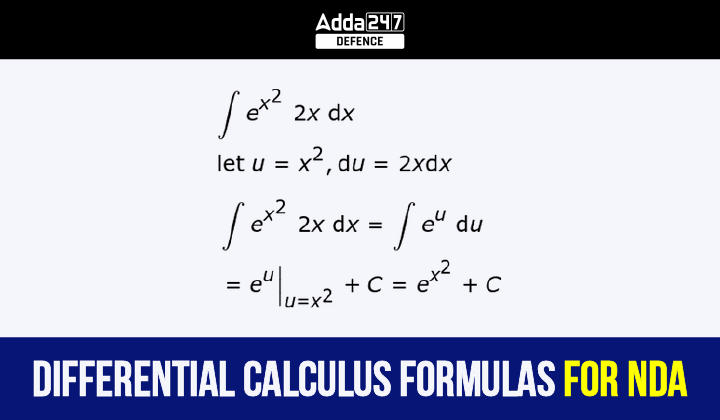Differential Calculus
Differential calculus is a branch of mathematics that focuses on understanding and analyzing the behavior of functions by studying their derivatives. The derivative of a function is a fundamental concept in differential calculus. It represents how the function changes at a specific point and provides important information about its behavior, such as its slope or rate of change.
Definition of Calculus
Calculus is a crucial field of mathematics that focuses on studying the concepts of rate of change and accumulation. It is built upon two fundamental ideas: derivatives and integrals.
The derivative of a function measures how the function changes at a given point. It provides information about the function’s slope or rate of change at that particular location, helping us understand its behavior in a localized manner.
The integral calculates the total accumulation of values under the curve of a function over a specified range. It allows us to determine the combined effect of the function’s values within that interval, effectively measuring the area enclosed by the curve.
Basics of Differential Calculus
The derivative of a function is a measure of how the function changes in response to specific values or inputs. It represents the rate at which the function’s output value changes with respect to the input value. Differentiation refers to the process of finding the derivative of a function.
Important terms related to the Fundamentals of Differential Calculus
Functions: A function is a mathematical relationship that establishes a connection between a set of inputs and a set of outputs, where each input value is associated with a unique output value. In mathematical notation, the symbol “f(x)” is commonly used to represent a function, where “x” represents the input variable, and “f(x)” represents the corresponding output value.
Dependent Variable: A dependent variable is a variable that relies on or is influenced by the value of another variable, known as the independent variable. In mathematical terms, the dependent variable represents the result or outcome that is determined through the use of a mathematical expression involving the independent variable.
Independent Variable: Independent variables are the input values or factors that are chosen in an experiment or mathematical equation. They represent the quantities or parameters that are under the control or influence of the experimenter or the person defining the mathematical relationship. In the equation y = 2x, the variable ‘x’ is considered the independent variable and ‘y’ represents the dependent variable, as its value is entirely determined by the value assigned to x.
Domain and Range: The input values of a function, also known as the domain, are the set of values that are valid inputs for the function. These values are plugged into the function to determine the corresponding output values. In the given example, the function f(x) = 5x has a domain consisting of the values {1, 2, 3}. By evaluating the function for each input value in the domain, we can determine the corresponding output values
For the function f(x) = 5x and the given domain values, we can calculate the outputs as follows:
f(1) = 5(1) = 5
f(2) = 5(2) = 10
f(3) = 5(3) = 15
Hence, the range of this function is {5, 10, 15}. The range represents all possible output values that the function can produce when the corresponding input values from the domain are used.
Limits: The limit is a fundamental concept in calculus that is used to define continuity, integrals, and derivatives. It allows us to understand the behavior of a function as the input values approach a particular point.
Let’s imagine the function “f” is defined on an open interval containing certain numbers, such as “a,” with the exception of “a” itself. The limit of a function f(x) is represented as:
limxa f(x) = L, if given >0, such that 0<x-a< implies f(x)=L< meaning, limit f(x) as “x” approaches “a” is “L”.
Derivatives: The derivative is a fundamental concept in differential calculus that provides valuable information about how a function changes. It is a mathematical expression that measures the rate or pace at which the function’s output value changes with respect to the input variable.
In mathematical notation, the derivative of a function y with respect to the variable x is represented as dy/dx. This notation indicates that we are calculating the rate of change of y with respect to x.
Differential Calculus Formulas: Assume we have a function f(x), the rate of change of a function with respect to x at a certain point ‘o’ lying in its domain can be written as; df(x)/dx at point o Or df/dx at o.
If y = f(x) is a quantity, then f'(x) is the derivative of the function f. (x). Also, if x and y vary with respect to variable t, we can construct the derivative in the form of differential equations using the chain rule formula as follows:
f'(x)=dy/dx=dy⁄dt/dx⁄dt; dx/dt≠0
The following table shows the differential calculus formulas:
| Differential Calculus Formulas | |
| d(x)/dx | 1 |
| d(ax)/dx | a |
| d(xn)/dx | nxˆn-1 |
| d(cosx)/dx | -sin x |
| d(sinx)/dx | cos x |
| d(tanx)/dx | sec²x |
| d(cotx)/dx | -cosec²x |
| d(secx)/dx | sec x. tan x |
| d(cosec x)/dx | -cosec x. cot x |
| d(lnx)/dx | 1/x |
| d(eˆx)/dx | eˆx |
| d(aˆx)/dx | (ln a) aˆx |
| d(sinˆ-1 x)/dx | 1/√(1-x)² |
| d(tanˆ-1 x)/dx | 1/(1 + x²) |
| d(secˆ-1 x)/dx | 1/⌊x⌋√(x²-1) |
Solved Examples:
Example1: Find the slope of the tangent of the curve y = 2×2 + 3x + 1, at the point (-1, 0).
Solution: To find the slope of the tangent to the curve y = 2x^2 + 3x + 1 at the point (-1, 0), we need to calculate the derivative of the function and substitute the x-coordinate of the given point into the derivative.
First, find the derivative of the function y = 2x^2 + 3x + 1 with respect to x:
f'(x) = d/dx (2x^2 + 3x + 1) = 4x + 3
Now, we substitute the x-coordinate of the given point (-1, 0) into the derivative:
f'(-1) = 4(-1) + 3 = -4 + 3 = -1
Therefore, the slope of the tangent to the curve y = 2x^2 + 3x + 1 at the point (-1, 0) is -1.
Example2: Differentiate x tan x.
Solution: To differentiate the function f(x) = x * tan(x), we can apply the product rule of differentiation. The product rule states that if we have two functions u(x) and v(x), the derivative of their product is given by:
(fg)’ = f’g + fg’
Let’s differentiate the given function step by step:
Let f(x) = x and g(x) = tan(x).
Using the product rule, we have:
f'(x) = 1 (derivative of x with respect to x is 1) g'(x) = sec^2(x) (derivative of tan(x) with respect to x is sec^2(x))
Now, applying the product rule:
(fg)’ = f’g + fg’ = (1)(tan(x)) + (x)(sec^2(x)) = tan(x) + xsec^2(x)
Therefore, the derivative of f(x) = x * tan(x) is tan(x) + xsec^2(x).



 What is SEAL Team Six- History and Train...
What is SEAL Team Six- History and Train...
 Will India Become Massive Defence Export...
Will India Become Massive Defence Export...










